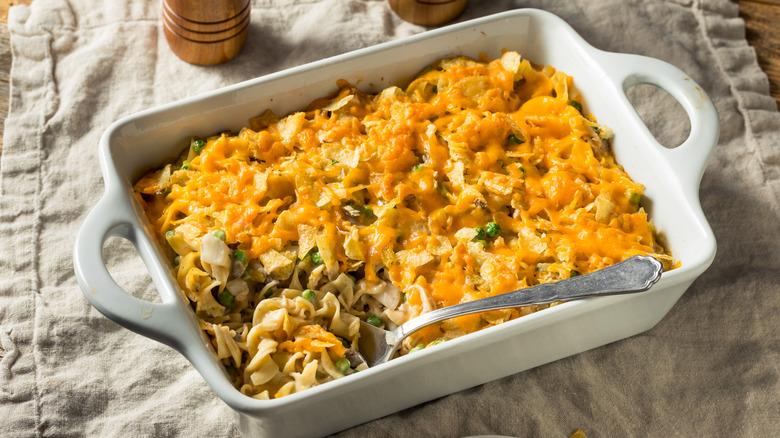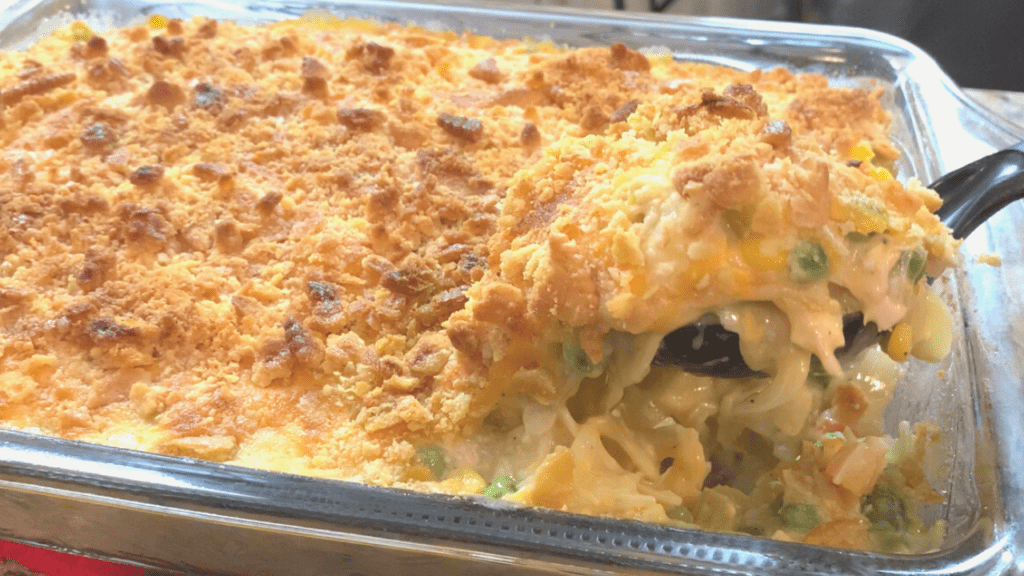How to Cook a Pork Roast in a Casserole Dish: A Complete Guide for All Home Cooks
Written By James Morgan
Have you ever wondered how to cook a pork roast in a casserole dish to achieve that mouth-watering, tender, and juicy result every time? Well, you are in the right place! This guide is meant to walk you through the entire process, ensuring that you can replicate this classic dish with confidence and get applause from everyone who tastes it. We will utilize a variety of simple yet effective techniques that will elevate your cooking prowess to new heights.
:max_bytes(150000):strip_icc()/broccoli-rice-casserole-3060928-hero-01-5c50df0a4cedfd0001f911c9.jpg)
The Essence of a Perfect Pork Roast
Cooking a pork roast, especially in a casserole dish, is an intricate dance of techniques ranging from seasoning and searing to roasting and resting. Each step, if done correctly, contributes to the final flavor and texture of the dish. The proper method of cooking a pork roast in a casserole dish ensures that the meat remains juicy, flavorful, and has the perfect brown crust. The casserole dish, with its even heat distribution and adequate depth, helps maintain the optimal cooking environment for the pork roast.

Essential Ingredients
- 4-5 pounds of pork roast
- 2 tablespoons olive oil
- 4 garlic cloves, minced
- 1 tablespoon fresh rosemary, chopped
- 1 tablespoon fresh thyme, chopped
- 1 tablespoon salt
- 1 teaspoon black pepper
- 2 cups chicken broth
- 2 large carrots, chopped
- 1 large onion, chopped
- 2 potatoes, peeled and cubed

The Cookware You'll Need
Before diving into the cooking process, it's essential to gather the right equipment. Ensuring you have the right cookware can make a significant difference in the outcome of your pork roast in a casserole dish. Here's a list of must-have cookware:

Preparation: The Foundation of a Great Roast
Choosing the Right Cut of Pork
The first step in mastering how to cook a pork roast in a casserole dish starts with selecting the perfect cut of meat. Opt for a bone-in pork shoulder or pork loin, as these provide the best flavor and tenderness. Visit your local butcher or meat supplier to get the freshest cut available. Remember, quality meat ensures a quality roast.
Seasoning the Pork Roast
A well-seasoned pork roast defines the flavor profile of the dish. Start by creating a simple, but aromatic, seasoning blend. In a bowl, combine the olive oil, minced garlic, chopped rosemary, chopped thyme, salt, and black pepper. Mix these ingredients thoroughly. Using your hands, rub the seasoning blend all over the pork roast, ensuring you cover every nook and cranny. Allow the meat to sit for at least one hour to absorb these flavors. If you can let it marinate overnight in the refrigerator, it will be even better as the flavors will deeply infuse into the meat.
Pre-Heating and Prepping Your Casserole Dish
While your pork is marinating, take time to prep your casserole dish. Preheat your oven to 325 degrees Fahrenheit (165 degrees Celsius). Make sure your casserole dish is clean and dry. Spread a thin layer of olive oil on the bottom to prevent sticking and to add an additional layer of flavor. This step is crucial as it creates the initial surface for searing the pork, locking in the juices, and ensuring that the roast comes out moist and tender.
Searing: Locking in the Juices
Preparing the Meat for Searing
Before placing the pork roast in the oven, give it a good sear on the stovetop. Heat a large skillet over medium-high heat. Add a couple of tablespoons of olive oil to the hot skillet. Carefully place the seasoned pork roast in the skillet, and sear it on all sides until you get a golden brown crust. This step is vital for flavor; it locks in the juices and gives the pork roast a beautiful color that's pleasing to the eye and the palate.
Searing Techniques
While searing, use a pair of kitchen tongs to turn the meat, ensuring all sides are equally browned. This process should take about 3-4 minutes per side. As you sear each side, a crust forms that seals in the juices, ensuring that the meat remains tender throughout the cooking process. Do not rush this step; patience here pays off in the final taste and texture of your pork roast.
Cooking the Pork Roast in the Casserole Dish
Arranging the Ingredients in the Casserole Dish
Once the pork is seared to perfection, it's time to assemble the dish. Place the seared pork roast in the casserole dish. Surround the pork with chopped carrots, onions, and potatoes. These vegetables will cook alongside the pork, absorbing its flavors and adding a wonderful aroma to your kitchen.
Adding the Liquid
Pour the chicken broth over the vegetables and around the pork. The chicken broth acts as both a cooking medium and a flavor enhancer. It ensures the meat remains moist while cooking and adds a rich, savory depth to the overall dish. Ensure the liquid level is about halfway up the sides of the pork roast and the vegetables.
Covering and Roasting
Cover the casserole dish with its lid or tightly with aluminum foil. This step is crucial as it traps steam inside, helping to cook the pork roast evenly. Place the covered dish in the preheated oven. Roast the pork at 325 degrees Fahrenheit (165 degrees Celsius) for about 2-3 hours. The cooking time may vary depending on the size of the roast and your oven's specifics. A general rule of thumb is to cook the pork for about 35-40 minutes per pound. Using a meat thermometer, ensure the internal temperature reaches 145 degrees Fahrenheit (63 degrees Celsius). This is the safe temperature for pork, ensuring it's cooked through but remains juicy.
Final Touches: The Finishing Touches
Resting the Meat
Once the pork roast reaches the desired internal temperature, remove the casserole dish from the oven. Let the meat rest for at least 15-20 minutes before slicing. Resting meat is an often overlooked but essential step. During this time, the juices redistribute throughout the meat fibers, leading to a more tender and flavorful roast. Cutting into the pork too early can cause the juices to escape, resulting in a drier roast.
Carving the Pork Roast
After the resting period, transfer the pork roast to a cutting board. Using a sharp knife set, slice the pork against the grain into thick, even slices. Carving against the grain shortens the meat fibers, making each bite more tender. Ensure you have a sturdy cutting board to handle the weight and size of the roast.
Serving Suggestions
Serve the sliced pork roast with the cooked vegetables from the casserole dish. The carrots, onions, and potatoes, having cooked in the chicken broth and pork juices, will be incredibly flavorful. For an added touch, spoon some of the liquid from the casserole dish over the pork slices. This not only adds moisture but also imparts the rich, savory flavors from the broth and seasonings. Pair this dish with a simple green salad or some crusty bread to complete the meal.
Cleaning Up
After enjoying your delicious pork roast, it's time to tackle the cleanup. Properly maintaining your casserole dish and other cookware is essential for longevity and performance. Use a quality cookware cleaner to remove any baked-on residues. For your cutting board, apply a bit of cutting board oil to keep it conditioned and prevent cracking. Maintaining your knives by honing them regularly will keep them in top condition for your next culinary adventure.
Conclusion
Mastering how to cook a pork roast in a casserole dish is a rewarding experience, elevating your home cooking to new levels. With the right ingredients, equipment, and techniques, you can create a dish that's not only delicious but also showcases your culinary skills. Whether you're cooking for a family meal, a special occasion, or just because you love a good roast, this guide has all the information you need to achieve perfection. Happy cooking, and enjoy your fabulous pork roast!
As an Amazon Associate, I earn from qualifying purchases.



